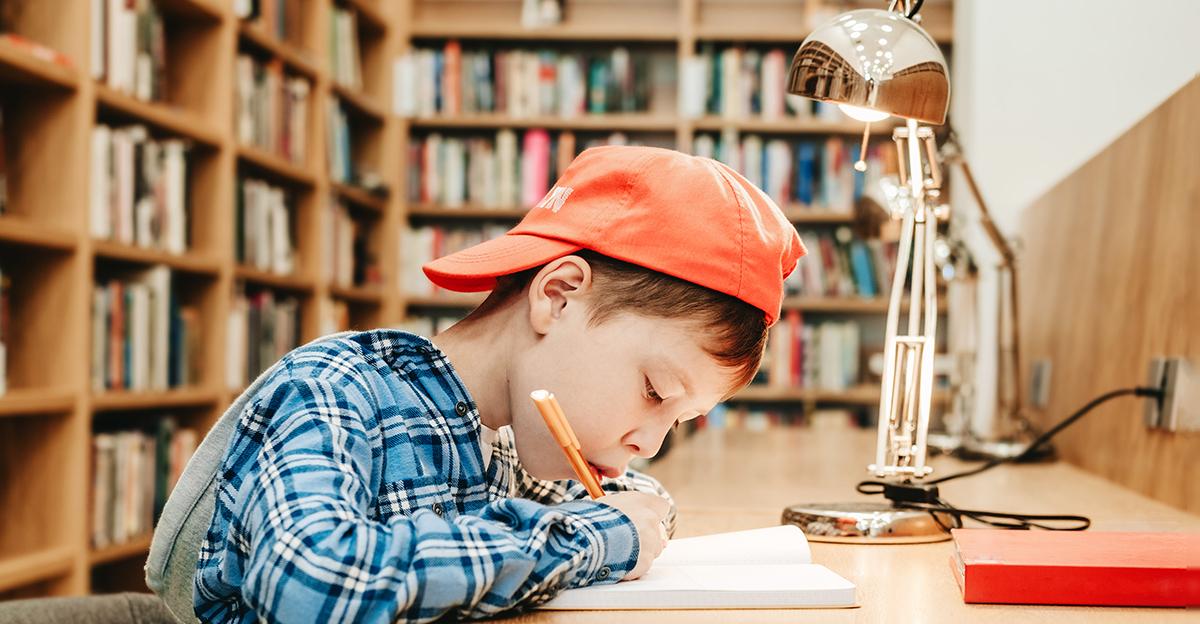An estimated 7.5 million students receive special education or related services under the Individuals with Disabilities Act (IDEA), and one in 36 has been identified with autism spectrum disorder (ASD). Educators are tasked with creating inclusive classrooms to meet diverse learning needs and ensure all students achieve high standards. Classroom design elements, such as lighting and acoustics, play a key role.
How Lighting Can Help Create Inclusive Classrooms
Natural lighting has been proven to help students focus and learn more effectively, but some learning spaces can’t access natural lighting. In fact, many classrooms are brightly lit by fluorescent bulbs, which have been shown to increase feelings of anxiety and induce headaches among some students.
In a classroom with filtered or well-designed lighting, students are more likely to feel calm and focused and might be in a better mood. Warmer light generally makes a space feel cozy, while whiter light can feel harsher and more task-oriented. Because students with sensory challenges or other special needs are often sensitive to lighting, fluorescent lights can inhibit their ability to focus.
When Fluorescent Lighting Goes Wrong
In one school, a nonverbal student on the autism spectrum had trouble reading his visual input communication device. Teachers thought the student had cognitive issues that prevented him from using the device. Then, a teacher noticed the student blinking quickly as he tried to get a good look.
The teacher realized the fluorescent lighting in the classroom was casting a glare on the laminated page of images. The student began wearing a visor to counteract the glare from the lights, and educators printed images on blue sheets of paper instead of white to help with visibility. A few weeks after those changes were made, he was actively using his communication device.
Alternate Lighting Options
To optimize the impact of lighting on students’ ability to focus and learn, use natural lighting wherever possible in the design of school facilities. Try to avoid using fluorescent lights and instead opt for warmer, recessed lighting sources. Equip the lighting sources for learning spaces with dimmer switches so that teachers can easily adjust the amount of lighting in the room.
If budgets don’t allow for better light fixtures and dimmers, consider replacing fluorescent bulbs with full-spectrum lights that offer a more natural experience and put less strain on students’ eyes.
Specially designed lights can help alleviate sensitivity to fluorescent lighting. For instance, Green Furniture Concept’s Leaf Lamp Lighting series performs double duty by offering ambient lighting and superior acoustics, using sound-absorbing qualities found in the materials and shape of the leaves.
And if replacing bulbs or light fixtures is out of the question, there are more affordable options for softening classroom lighting. For instance, hanging light filters below standard fluorescent lighting fixtures mutes the aggressive-feeling rays that cause anxiety or headaches.
The Role of Acoustics in Creating Inclusive Classrooms
Auditory Needs
If students can’t hear the teacher or each other well, they won’t be able to learn effectively. While many new school buildings or those undergoing extensive renovations include built-in sound amplification systems within classrooms and other learning spaces, older buildings can present challenges with acoustics.
Classroom amplification systems are helpful for students with auditory processing disorders, such as those who have trouble filtering out background noise from computers, hallways, or even other students.
Auditory Overstimulation
Large open spaces, such as cafeterias and gymnasiums, are often noisier. Similarly, creating and collaborating during active learning also tends to be noisy. Instead of sitting passively in their seats and listening to the teacher talk, students move around and talk animatedly with their peers.
The din this creates can make it hard for some students to focus, so it’s important to consider the acoustics in a learning space during the design process.
Sound-absorbing acoustic panels can work as portable room partitions, allowing you to move them around to fit your classroom’s needs. If you have a sensory corner, a sound shell chair is an excellent addition for students needing to reduce stimulation. Noise-canceling headphones are a simple and affordable option, or you can opt for a noise-reduction device to give a student a chance to self-manage without shutting out all sound.
What changes have you made in your classroom to make it more inclusive and accessible to everyone? Let us know in the comments!
Cecilia Cruse
Cecilia Cruse, MS, OTR/L has a BS degree in Occupational Therapy from the University of Florida, and her Master’s degree in Education from Georgia State University. She is SIPT certified and has over 25 years of experience in pediatrics with school-based services, acute care, and outpatient pediatric settings.







Leave a Reply